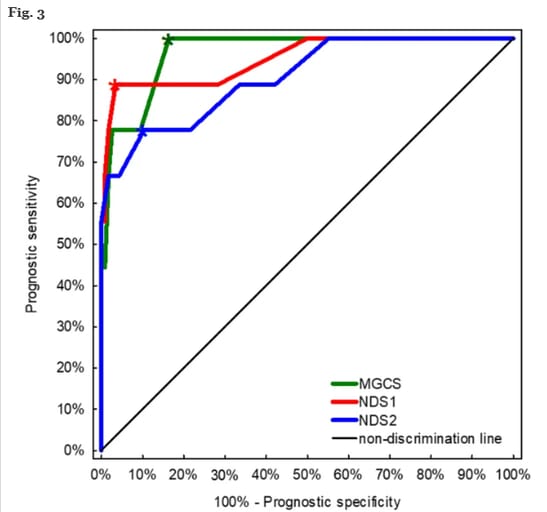- Veterinary View Box
- Posts
- New Insights into Canine Neurology: Predicting Survival in Yorkshire Terriers with Meningoencephalitis
New Insights into Canine Neurology: Predicting Survival in Yorkshire Terriers with Meningoencephalitis
BMC Veterinary Research (2025)
Laura Brewińska, Aleksandra Banasik, Michał Czopowicz, Marta Płonek, Elżbieta Giza, Adriana Czerwik, Agnieszka Olszewska, Thomas Flegel, Marcin Wrzosek
Background
Meningoencephalitis of unknown origin is a common inflammatory central nervous system disorder in dogs, with Yorkshire Terriers predisposed to necrotizing leukoencephalitis. Prognostic factors for meningoencephalitis of unknown origin remain inconsistent, and neurological assessment scales have been suggested as potential tools for outcome prediction. This study evaluates the usefulness of three scales—Modified Glasgow Coma Scale, Neuro Disability Scale designed by Smith, and Neuro Disability Scale designed by Gonçalves—for short-, mid-, and long-term prognosis in Yorkshire Terriers diagnosed with meningoencephalitis of unknown origin.
Methods
A retrospective multicenter cohort study analyzed 127 Yorkshire Terriers with a probable diagnosis of meningoencephalitis of unknown origin. Neurological scores were assigned using the Modified Glasgow Coma Scale, Neuro Disability Scale designed by Smith, and Neuro Disability Scale designed by Gonçalves at admission. The association between these scores and survival was assessed for three time points: 7 days, 100 days, and 365 days. Statistical analyses included survival modeling, logistic regression, and correlation testing. Magnetic resonance imaging findings, cerebrospinal fluid analysis, body weight, and treatment protocols were also evaluated as prognostic factors.
Results
All three neurological assessment scales significantly predicted short-term prognosis (death within 7 days, p < 0.001). However, none were significantly associated with survival at 100 or 365 days. Dogs with unilateral magnetic resonance imaging lesions had significantly higher survival odds at both 100 days (12-fold increase) and 365 days (3-fold increase) compared to dogs with bilateral lesions. Heavier dogs (>3.2 kg) had a 6-fold higher survival probability at 365 days. The Modified Glasgow Coma Scale showed the highest prognostic accuracy for short-term survival, while the Neuro Disability Scale designed by Smith was the most balanced tool for clinical application.
Limitations
The study was retrospective, and variability in treatment protocols may have influenced outcomes. The diagnosis of meningoencephalitis of unknown origin was not confirmed by histopathology in most cases. The small sample size limited statistical power for long-term prognostic associations.
Conclusions
Neurological assessment scales, particularly the Modified Glasgow Coma Scale and the Neuro Disability Scale designed by Smith, are useful for predicting short-term survival in Yorkshire Terriers with meningoencephalitis of unknown origin but are not reliable for mid- or long-term prognosis. Magnetic resonance imaging lesion distribution and body weight were identified as better predictors of longer-term survival. These findings highlight the need for breed-specific prognostic tools and further prospective studies to refine meningoencephalitis of unknown origin outcome prediction.

Receiver operating characteristic (ROC) curve for the three neurological assessment scales. Legend: (MGCS – Modified Glasgow Coma Scale, NDS1 – Neuro Disability Scale according to Smith et al. (2009); NDS2 – Neuro Disability Scale according to Goncalves et al. (2023)). Asterisks indicate the most optimal cut-off values
How did we do? |
Disclaimer: The summary generated in this email was created by an AI large language model. Therefore errors may occur. Reading the article is the best way to understand the scholarly work. The figure presented here remains the property of the publisher or author and subject to the applicable copyright agreement. It is reproduced here as an educational work. If you have any questions or concerns about the work presented here, reply to this email.